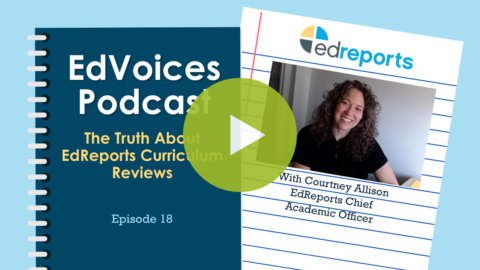5 Reasons Instructional Materials Matter for Equity
Educator reviewers share why materials matter for equity and why the stakes for students are so high.
Latest Resources
article
3 Reasons EdReports Is Launching Pre-K Curriculum Reviews
Find out how EdReports' pre-K curriculum reviews will promote access to high-quality materials and instruction for all of our youngest learners.
how-to
6 Ways to Use EdReports in Your Curriculum Strategy
Learn how to use EdReports to strengthen your curriculum strategy with tips on planning, educator involvement, and selecting high-quality materials.
video
The Truth About EdReports Curriculum Reviews
Explore how EdReports curriculum reviews help districts select and implement high-quality materials, with insights from Chief Academic Officer Courtney Allison.


